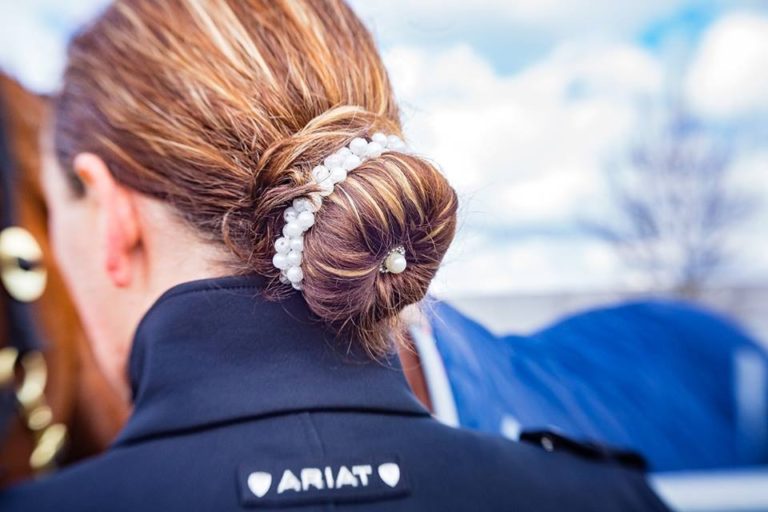Heather Sansom is the author of rider fitness ebooks Complete Core Workout for Rider, and a regular columnist in several equestrian publications including Dressage Today.?EquiFITT.com offers rider fitness clinics & workshops, Centered Riding? instruction, and convenient distance eCoaching for riders anywhere.? Subscribe to receive free monthly Equestrian Fittips, and download rider fitness eBooks at:??www.equifitt.com/resources.html
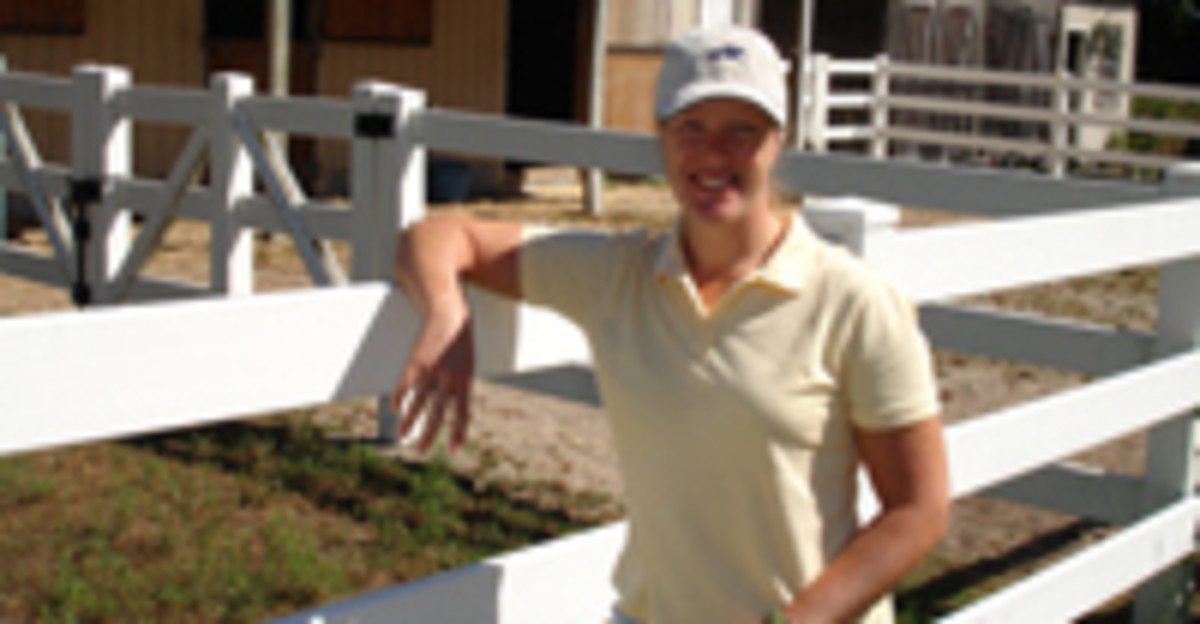
Doing personal rider fitness work benefits your riding and can help accelerate your results in the saddle in many ways.
This month’s target area is the shoulders. Tracey is a dressage rider who has a tendency to absorb tension in her shoulders. Her shoulders round forward, caving her chest in a bit. When she is walking, she has correct posture. As she gets moving and further into her ride, her body tends to curl up more. Rather than bracing her back, she tends to lean back.
To compensate for the rounding forward shoulders, she leans back in her upper back compromising her balance and ability to use her back properly. She becomes less effective in both downward and upward transitions, and her seat becomes less deep. She takes more of the effort of down transitions into her biceps. Instead of using her pelvis to signal an upward shift, she ends up squeezing with her lower legs. All of this happens completely unconsciously, although naturally she notices that she seems to be losing her balance and finding it hard to sit deep.
Analysis
Biomechanically, a number of things are contributing to the pattern in her riding. She is riding with a top coach on a very experienced horse, so access to good coaching is not what she is lacking. Tracey has tight chest muscles that draw her shoulders forward and in. At the same time, she has a fairly weak back, very little muscle in the area between her shoulder blades and weak lower abdominal muscles. From countless repetitions of the behavior of leaning back rather than pulling her shoulders back, her body has a learned muscle memory, which kicks in automatically. When her trainer says she needs to get her shoulders back, her immediate reflex is to lean back more, worsening the problem.
Solution
When I am working with a rider, addressing an issue like this can take several months of progressive work. In a clinic situation, however, I always aim for the “first steps” a rider can take to correct an issue. In this case, the starting point for Tracey is to open up her shoulders by stretching her chest and shoulders. While stretching frees her shoulders to be placed back more effectively, stretching alone is not enough. Without the required strength in the opposing muscles, her shoulders will not be able to stay back without tension. As a dressage rider, she needs to place her shoulders correctly without tension. So, she needs to also strengthen the rhomboids (between her shoulder blades), her rear deltoids and lower trapezius (back of shoulders, upper back) and back. Simple exercises that would respond to these needs would be stretching backward over an exercise ball with arms out and doing back extensions in combination with reverse flies and forward presses.
Exercises
Stretching Over the Ball : When stretching over the exercise ball, take time to breath deeply and relax your spine and shoulders as you allow the weight of your arms to stretch your chest muscles (when out to the side) or open up your shoulders (when overhead). Keep your palms up.
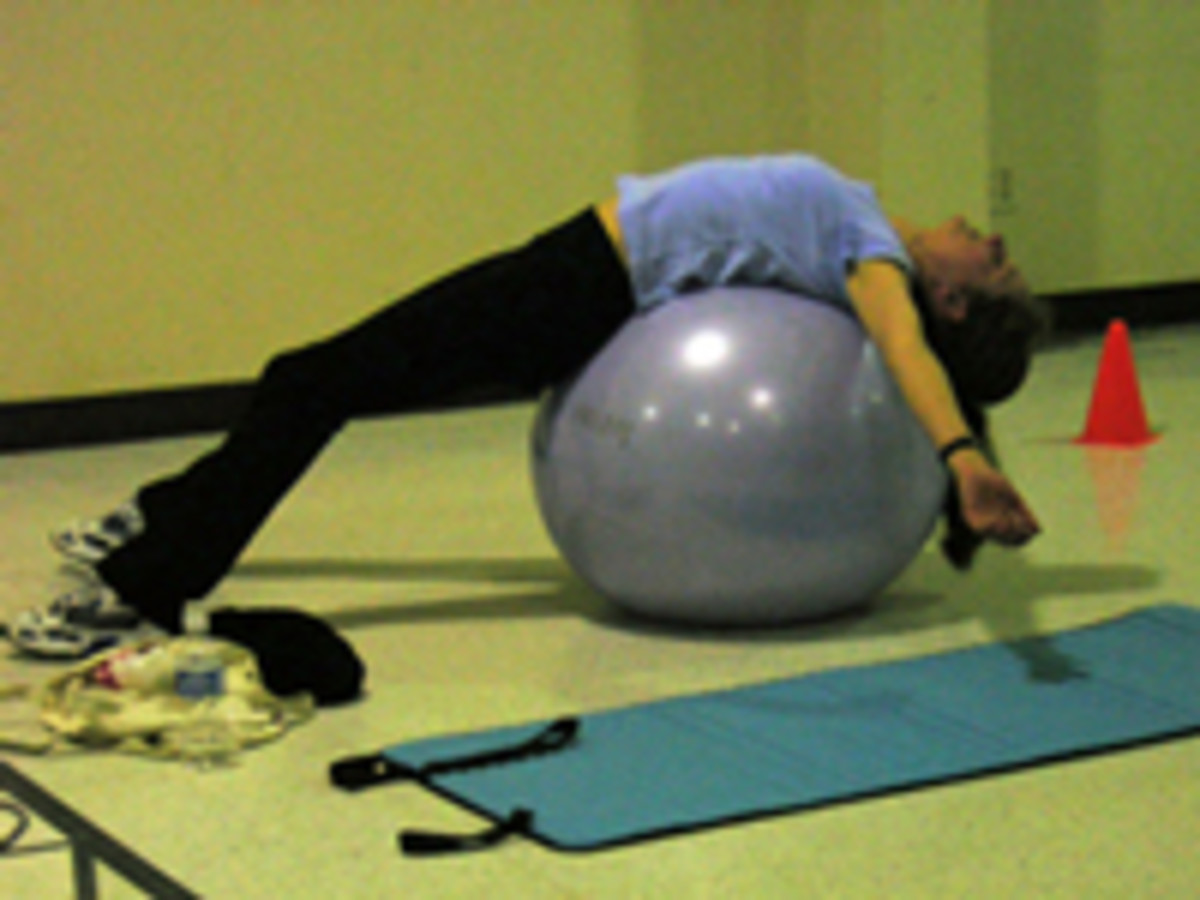
Back Extension with Reverse Fly: Performing a back extension correctly is important since hyper-extending (raising your back too high) will put too much pressure on the disks in your lower back and can cause back pain. In a correct back extension, your body is roughly 45 degrees to the floor. Doing the extensions with your feet against the wall, or held under an object will allow you to bend your body further over the ball before raising your back up for a more intense version of the exercise. If you do them on the ball with no support for your feet, you will not be able to lift your back as high.
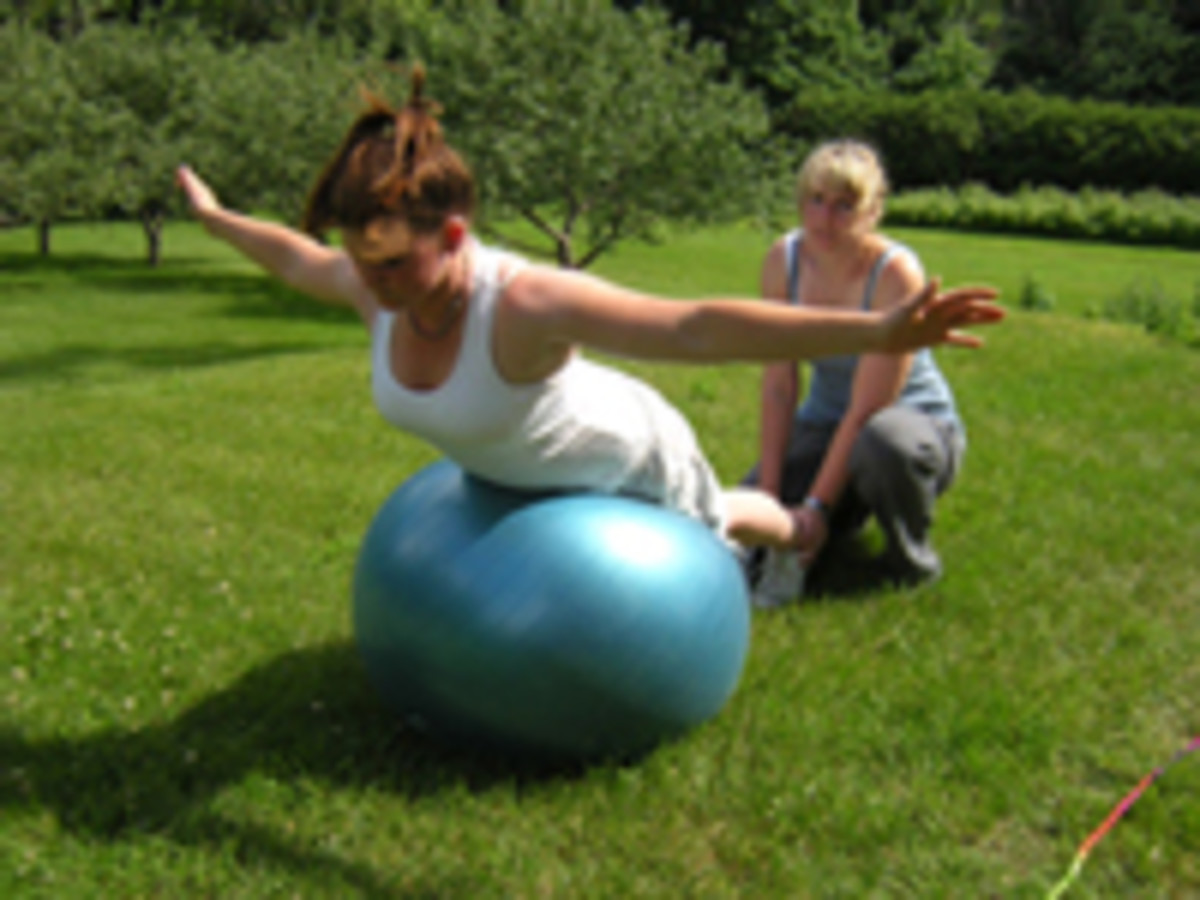
You can use light weights for the reverse fly, but you should feel fatigued by the time you have done 15 to 20 repetitions. If you do not feel anything, increase the weight. If you do not have weights handy, use an object or just bare hands, but squeeze the muscles at the back of your shoulders each time. Start with arms out to your sides but slightly lower than parallel with the floor. Raise your arms parallel with or above your back. Done correctly, your reverse fly should look like a bird flapping, and you should have a sensation of squeezing your shoulder blades together as you raise your arms, and spreading them apart as you come back down and reach your arms forward.
Back Extension with Forward Press: Move the weights from beside your cheeks, straight forward so your arms are a continuation of your body, parallel to the floor. Keep your palms facing the floor. Bend your elbows to bring your hands back to your cheeks. Repeat 10 to 20 times.
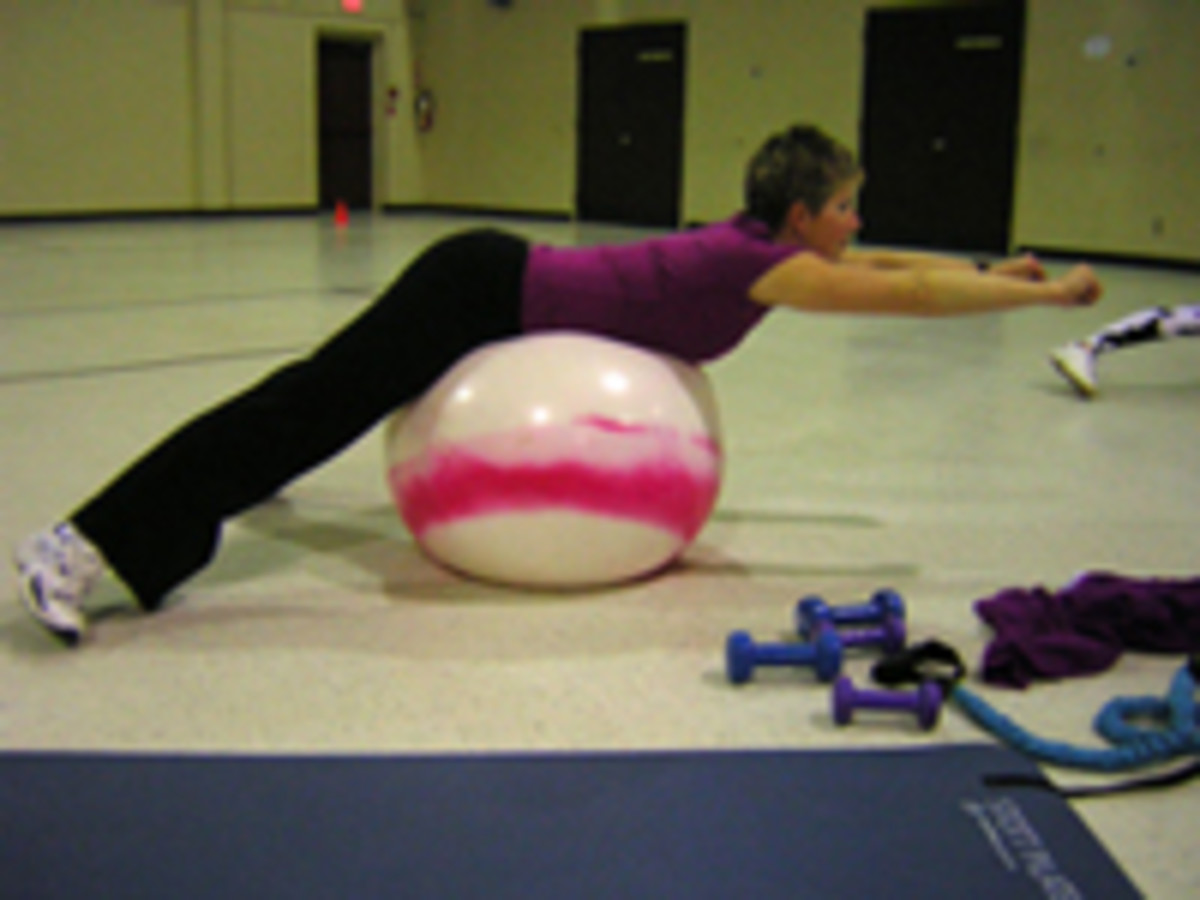

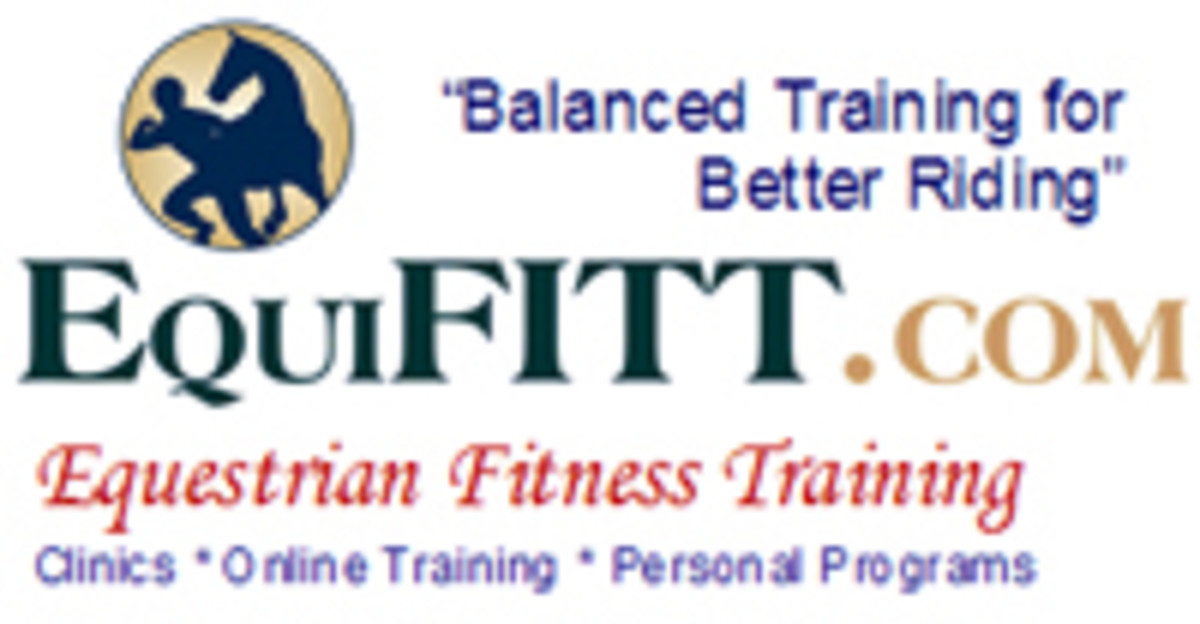
Heather Sansom owns Equifitt.com Equestrian Fitness, offering personalized coaching through clinics and convenient online coaching available anywhere. She also offers a free monthly fittips newsletter and new e-books, Complete Core Workout for Riders and Handy Stretching Guide for Riders, at Equifitt.com.



